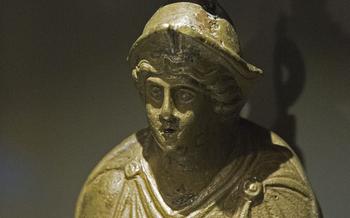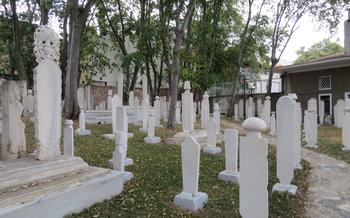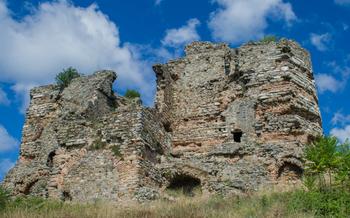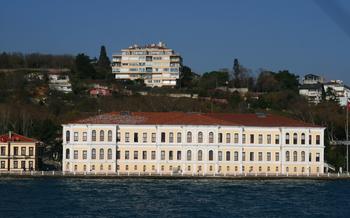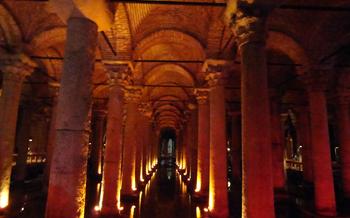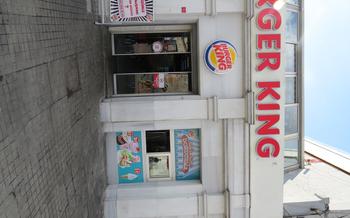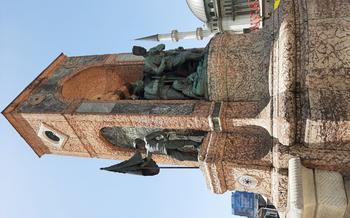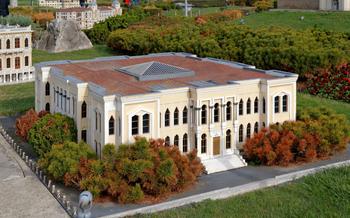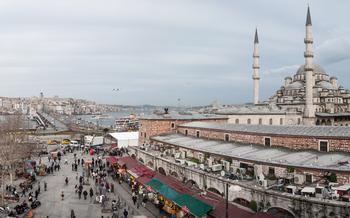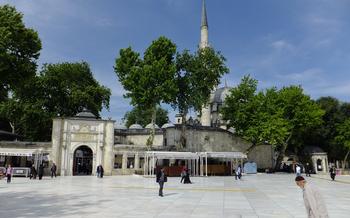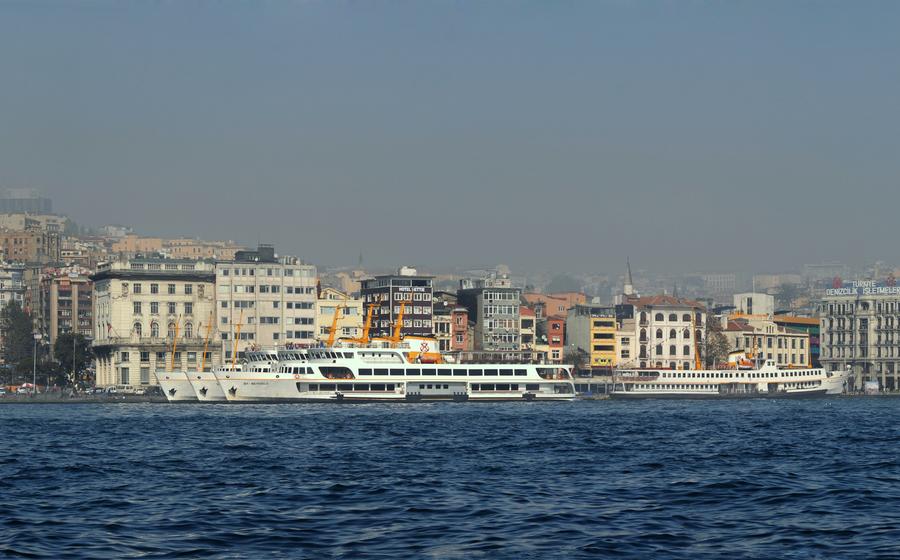
Galata Tower
- The Galata Tower: A Monumental Landmark in Istanbul
- The Gift Shop: Souvenirs and Mementos
- The History of the Galata Tower
- The Galata Tower and the Surrounding Area
- The Legends and Myths Surrounding the Galata Tower
- The Galata Tower in Popular Culture
- The Galata Tower and the Arts
- Restoration and Preservation Efforts
- The Galata Tower as a Symbol of Istanbul
- The Galata Tower and the Future
- Practical Tips for Visiting the Galata Tower
The Galata Tower: A Monumental Landmark in Istanbul
History and significance
The Galata Tower, an iconic symbol of Istanbul, stands proudly in the Beyoğlu district, overlooking the Golden Horn and the Bosphorus Strait. Erected in the 6th century by the Byzantine emperor Justinian I as a watchtower, it has witnessed the rise and fall of empires, the ebb and flow of history, and the ever-changing cityscape of Istanbul. Throughout the centuries, the tower has served various purposes, from a prison to an observation post, and has become an enduring symbol of the city's rich heritage and cultural tapestry.
Architectural features
The Galata Tower, with its distinctive conical shape and red-brick exterior, is a testament to the architectural prowess of its time. Its sturdy construction, featuring nine stories and a height of 690 meters, has withstood the ravages of time and numerous earthquakes, making it one of the oldest surviving structures in Istanbul. The tower's design incorporates Byzantine, Genoese, and Ottoman architectural elements, reflecting the diverse influences that have shaped Istanbul's history.
Location and accessibility
The Galata Tower is strategically located in the Beyoğlu district, a vibrant hub of culture, entertainment, and commerce. Situated at the end of Istiklal Street, one of Istanbul's most famous pedestrianized shopping streets, the tower is easily accessible by foot, public transportation, or taxi. Its prominent position on the Galata hill offers breathtaking panoramic views of Istanbul, making it a must-visit destination for tourists and locals alike.
The Gift Shop: Souvenirs and Mementos
The Galata Tower gift shop is a treasure trove of souvenirs and mementos that will remind you of your visit to this iconic landmark. Located on the ground floor of the tower, the shop offers a wide variety of merchandise, including postcards, magnets, keychains, t-shirts, and other items adorned with the tower's distinctive silhouette.
For those looking for something truly unique, the gift shop also offers a selection of handmade souvenirs crafted by local artisans. These one-of-a-kind pieces are perfect for those who want to take home a piece of Turkish culture and craftsmanship.
Prices at the gift shop are generally affordable, and there are options to suit every budget. Payment can be made in Turkish lira, euros, or major credit cards.
Whether you're looking for a small token to remember your visit or a special gift for a loved one, the Galata Tower gift shop is sure to have something to suit your needs.
The History of the Galata Tower
The Galata Tower, an iconic landmark that has stood watch over Istanbul for centuries, boasts a rich and storied history. Its origins can be traced back to the 6th century, when the Byzantine emperor Justinian ordered the construction of a watchtower on the site to protect the city from potential naval attacks. The tower, known initially as the Megala Pyrgos, served as a crucial defensive outpost, providing a strategic vantage point to monitor the Bosphorus Strait and the surrounding area.
In the 13th century, the Genoese, a powerful maritime republic from Italy, gained control of Galata, the district where the tower is situated. They recognized the tower's strategic importance and significantly expanded and reinforced it, transforming it into a formidable fortress. The Genoese used the tower as a watchtower, a prison, and a lighthouse, leaving an enduring mark on its history and architecture.
During the Ottoman conquest of Constantinople in 1453, the Galata Tower played a crucial role. The Ottoman forces used it as an observation post to monitor the city's defenses, and it is believed that the tower's strategic position influenced the outcome of the siege. After the conquest, the Ottomans maintained the tower as an important defensive structure and used it for various purposes, including as a prison, a treasury, and an observation post for fire spotting.
Throughout its long and eventful history, the Galata Tower has undergone several modifications and renovations. In the 16th century, the Ottomans added a conical roof to the tower, giving it its distinctive silhouette. In the 19th century, the tower was extensively restored and renovated to serve as a lighthouse, a role it fulfilled until the early 20th century. Today, the Galata Tower stands as a testament to Istanbul's rich and diverse history, attracting millions of visitors each year who come to admire its architectural grandeur and immerse themselves in its captivating past.
The Galata Tower and the Surrounding Area
The Galata Tower is situated in the vibrant Beyoğlu district, the heart of modern Istanbul. This district is renowned for its bustling Istiklal Street, a pedestrianized avenue lined with shops, restaurants, cafes, and cultural landmarks. The tower's strategic location offers visitors easy access to a multitude of attractions, including the iconic Taksim Square, the historic Pera Palace Hotel, and the lively nightlife scene of Beyoğlu.
To reach the Galata Tower, visitors can take advantage of Istanbul's well-connected public transportation system. The Tünel, the world's second-oldest subway line, offers a charming ride from Karaköy to Beyoğlu, with a stop right next to the tower. Alternatively, visitors can hop on one of the many buses or trams that serve the area. Taxis are also readily available, providing a convenient and affordable way to get to the tower from anywhere in the city.
The Legends and Myths Surrounding the Galata Tower
The Galata Tower is not only a historical landmark but also a source of fascination and inspiration for many legends and myths. One of the most famous tales is that of Hezarfen Ahmet Çelebi, a 17th-century Ottoman aviator who is said to have flown from the tower using a pair of artificial wings. According to legend, Çelebi successfully glided across the Bosphorus Strait and landed on the Asian side, earning him the title of the first person to achieve powered flight.
Another legend associated with the tower is the belief that it was built by the Genoese, a powerful maritime republic that had a strong presence in the region during the Middle Ages. While there is no historical evidence to support this claim, it has persisted over the centuries and has become part of the tower's mystique.
Finally, there is the myth of the imprisoned princess. According to this tale, a beautiful princess was locked away in the tower by her father, who feared that she would be kidnapped by a foreign prince. The princess is said to have languished in the tower for many years, pining for her freedom. Visitors to the tower can still see the window where the princess is said to have been held captive.
The Galata Tower in Popular Culture
The Galata Tower has captured the imagination of artists, writers, and filmmakers for centuries, becoming an iconic symbol of Istanbul in popular culture. In the 1963 James Bond movie "From Russia with Love," the tower serves as a dramatic backdrop for a thrilling helicopter chase scene. The tower also makes an appearance in the popular Turkish TV series "Muhteşem Yüzyıl" (Magnificent Century), which depicts the life of the Ottoman sultan Süleyman the Magnificent.
Novelists have also found inspiration in the Galata Tower. In his novel "The Forty Days of Musa Dagh," the Armenian-American writer Franz Werfel describes the tower as a symbol of hope and resilience for the Armenian people during the Armenian genocide.
The tower's unique silhouette and historical significance have made it a popular subject for artists and photographers. The Turkish painter İbrahim Çallı created a series of paintings depicting the tower, capturing its essence in vibrant colors and brushstrokes.
Today, the Galata Tower continues to be a source of inspiration for contemporary artists and cultural creators. It serves as a venue for concerts, exhibitions, and other cultural events, further solidifying its status as a cultural landmark of Istanbul.
The Galata Tower and the Arts
The Galata Tower has long served as a muse for artists, writers, and musicians, inspiring countless works of art, literature, and music. Its striking silhouette and rich history have made it a popular subject for painters, photographers, and illustrators. The tower has also been featured in numerous films, television shows, and novels, both Turkish and international. In Turkish literature, the tower is often mentioned in works that evoke the city's cosmopolitan atmosphere and vibrant cultural heritage.
The tower's unique architectural features and historical significance have made it a popular venue for concerts, exhibitions, and other cultural events. The tower's observation deck offers a stunning backdrop for performances and events, with panoramic views of the city providing an unforgettable setting. The tower's unique acoustics also make it an ideal venue for musical performances, creating a truly immersive experience for audiences.
Restoration and Preservation Efforts
The Galata Tower has undergone several renovations and restoration projects throughout its long history. In the 15th century, the Ottomans reinforced the tower's structure and added a new entrance. In the 19th century, the tower was restored by the French architect Pierre-Antoine Bardet, who added the conical roof and the observation deck.
In recent years, the Galata Tower has undergone extensive restoration work to preserve its historical integrity and ensure its safety for visitors. In 2013, the tower's exterior was cleaned and repaired, and the interior was renovated to improve accessibility and safety. The tower's structural stability was also reinforced, and a new fire safety system was installed.
The ongoing restoration and preservation efforts of the Galata Tower are essential to ensuring that this iconic landmark continues to stand tall and proud for generations to come. These efforts demonstrate the deep respect and appreciation that the people of Istanbul have for their city's rich cultural heritage.
The Galata Tower as a Symbol of Istanbul
The Galata Tower stands as a symbol of Istanbul, representing the city's rich history, diverse culture, and architectural heritage. It has become synonymous with the city, gracing countless postcards, travel brochures, and souvenirs. The tower's iconic silhouette, visible from various vantage points, has become deeply embedded in the visual identity of Istanbul.
Beyond its physical presence, the Galata Tower holds cultural and symbolic significance. It has witnessed the city's transformation over the centuries, from the Byzantine era to the Ottoman Empire and beyond. Its resilience and enduring presence have earned it a special place in the hearts of Istanbulites and visitors alike.
The tower's location at the confluence of the Golden Horn and the Bosphorus Strait further enhances its symbolic value. This strategic position has made it a witness to the city's maritime history and its role as a crossroads of civilizations. The tower's observation deck offers breathtaking panoramic views that encapsulate the essence of Istanbul, with its domes and minarets, sprawling cityscape, and stunning waterways.
As a symbol of Istanbul, the Galata Tower transcends its function as a mere tourist attraction. It has become an emblem of the city's cultural heritage, a source of pride for its residents, and a cherished landmark that continues to inspire and captivate visitors from around the world.
The Galata Tower and the Future
The Galata Tower has stood as a symbol of Istanbul for centuries, and its future remains bright. With ongoing efforts to preserve and restore the tower's heritage, it is poised to continue attracting visitors from around the world. Plans are underway to further develop the tower and its surroundings, enhancing its role as a cultural and tourist hub. Increased tourism and cultural programming are expected to contribute to the sustainable development of Istanbul, showcasing the city's rich history and vibrant contemporary culture.
The Galata Tower has the potential to become an even more iconic landmark, attracting visitors with its unique blend of history, culture, and breathtaking views. Through careful planning and responsible development, the tower can continue to serve as a source of inspiration and a catalyst for economic growth, while preserving its architectural integrity and historical significance for generations to come.
Practical Tips for Visiting the Galata Tower
To make the most of your visit to the Galata Tower, consider these practical tips:
-
Choose the right time of day: The best time to visit the tower is either early in the morning or late in the afternoon, when the crowds are smaller and the light is ideal for photography.
-
Dress appropriately: The tower's observation deck can be windy, so it's advisable to wear comfortable shoes and layers of clothing.
-
Accessibility: The tower is wheelchair accessible, with elevators available to transport visitors to the observation deck.
-
Enjoy the Secret Garden: Take advantage of the hidden gem within the tower's grounds, the Secret Garden. This tranquil oasis offers a peaceful spot to relax and soak in the beauty of the surrounding area.
